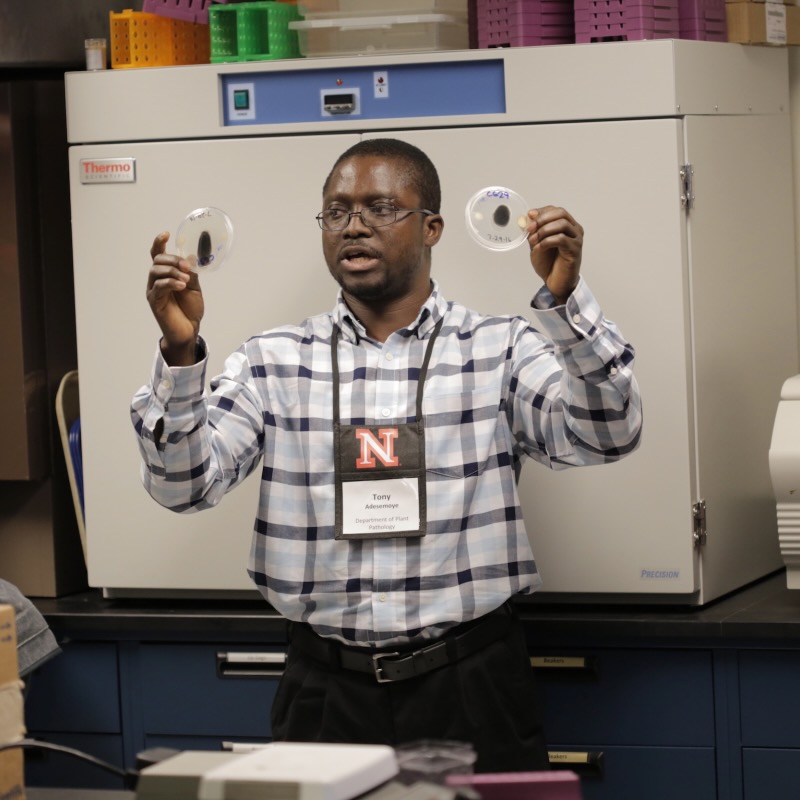Dr. Adesemoye works to design management plans for controlling the spread of bacterial infection through crops, which is super important for maintaining food production.

Anthony Adesemoye, Ph.D.
Assistant Professor of Plant Pathology (University of Nebraska-Lincoln)
Dr. Adesemoye earned his Ph.D. from Auburn University in 2009. He completed postdoctoral research in Dr. Akif Eskalen’s lab at the University of California, Riverside. At Nebraska, he collaborates with Dr. Stephen Wegulo.
In the past decade, there has been an increase in the number of citrus trees infected with dry root rot in California. Infected trees lose most of the color in their leaves for several years, before wilting and dying. No treatment has been found that can save an infected tree — it must be removed from the orchard and replaced with new saplings to stop the spread. The fungus Fusarium solani is usually found in the roots of the dead trees, and is thought to be the direct cause of dry root rot. However, this fungus can also be present without causing rot, so it is thought that maybe the tree has to be weakened by other stress factors too.
In a recent paper, Dr. Adesemoye and colleagues looked for another fungus, Neonectria macrodidyma, which it has been shown to cause black foot disease in apple trees and grapevines in California. This fungus infects plants through wounds in the roots and has caused a lot of economic loss in the state. The authors examined samples from six orchards across Tulare County and found evidence of this fungus in the roots of citrus trees, which had never been reported before. They suggest that this same fungus may be one of the unidentified stresses that make citrus trees more susceptible to dry root rot and that the pervasiveness of this fungus within Californian agricultural land needs to be examined.